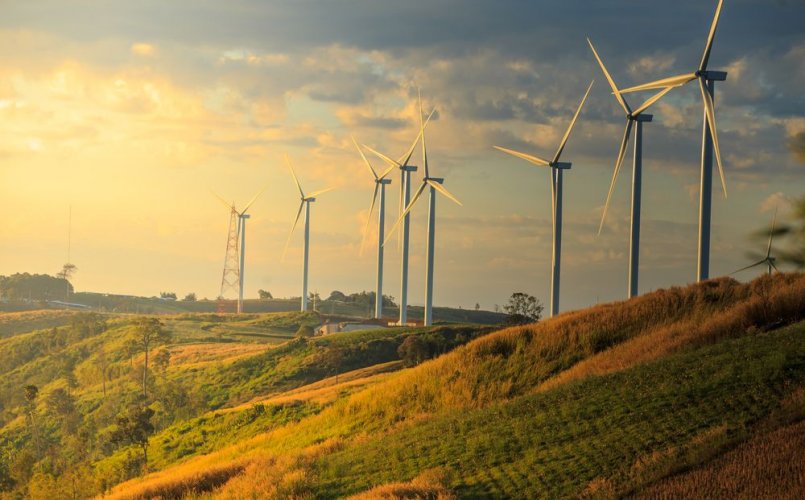Andriy Konechenkov, chairman of the board of the Ukrainian Wind Energy Association (UWEA), said that during the full-scale war, three wind farms with a total capacity of 228.5 MW were commissioned in Ukraine.
The equipment for the Tiligul and Dniester wind farms was delivered before the full-scale invasion, he said in an interview with Ukrainian Energy.
Konechenkov noted that for the wind farm in Lviv region, the German company Nordex supplied equipment during the war through Poland, provided that the Ukrainian company assumes all insurance risks.
He emphasized that 1860 MW of wind power capacity has been installed in Ukraine as of today. Of these, 1317 MW of capacity, or 71% of the total, is located in the temporarily occupied territories in Kherson, Zaporizhzhia, Donetsk and Luhansk regions. The main controlled stations are located in Mykolaiv, Odesa and Lviv regions.
Konechenkov said that several small stations, two or three turbines each, which were previously in operation, were also installed in Ternopil and Ivano-Frankivsk regions. Of those parks operating in large-scale wind energy to supply electricity to the grid, he named the one in Odesa region:
- VES "Yuzhne Energy",
- Dniester wind power plant, the capacity of which was increased from 40 MW to 60 MW during the war;
- Ovidiopol wind farm of the Turkish company Guris.
The head of UVEA added that the first and second phases of the Stary Sambir wind farm are currently operating in the Lviv region. In December 2023, the wind generators of the Skolivska wind farm with a capacity of 54.5 MW should start operating. It is expected that in 2024-2025 the capacity of Tiligul wind farm will increase from 114 MW to 500 MW.
According to him, the occupiers damaged 10 wind turbines in Kherson region and Mykolaiv region.
"There were attempts to start turbines manufactured by GE and Nordex at the occupied stations, but nothing came of it – it is impossible to restart them, because the Russians do not have access to these technologies. Regarding the launch of other turbines, there is no complete information," Konechenkov said.
He added that the Danish company Vestas built a plant for the production of three-megawatt turbines in Ulyanovsk, so Russians are well acquainted with this model of wind generators. But Vestas did everything possible to prevent the launch of its turbines in the temporarily occupied territory.
According to him, the occupiers dug up and dismantled the copper cables at the Sivaska wind farm. However, a wind farm, unlike a solar farm, cannot be disassembled. After all, the height of the wind generator mast is more than 100 meters, and the weight is about 200 tons. Therefore, such dismantling requires appropriate specialists, equipment and technologies. It is likely that the surviving turbines after de-occupation can be quickly restarted.
"With solar stations, the situation is more complicated: there are many shot down SPPs, dismantled panels. But the worst situation among renewable energy facilities is at the Kakhovka hydroelectric power station. It is completely destroyed. It is almost impossible to restore it quickly, moreover, ecologists have questions about the expediency of restoration," Konechenkov said.
Earlier, EcoPolitic wrote, that after the de-occupation of the village of Visokopylla in the Kherson Region, the Ukrainian military filmed the consequences of the Russian occupation, in particular a partially destroyed solar power plant and about 7 dead cows.
As EcoPolitic previously reported, the company "DTEK VDE" has started preparations for the construction of a powerful wind park in the Poltava region on the territory of the Globyn community.





